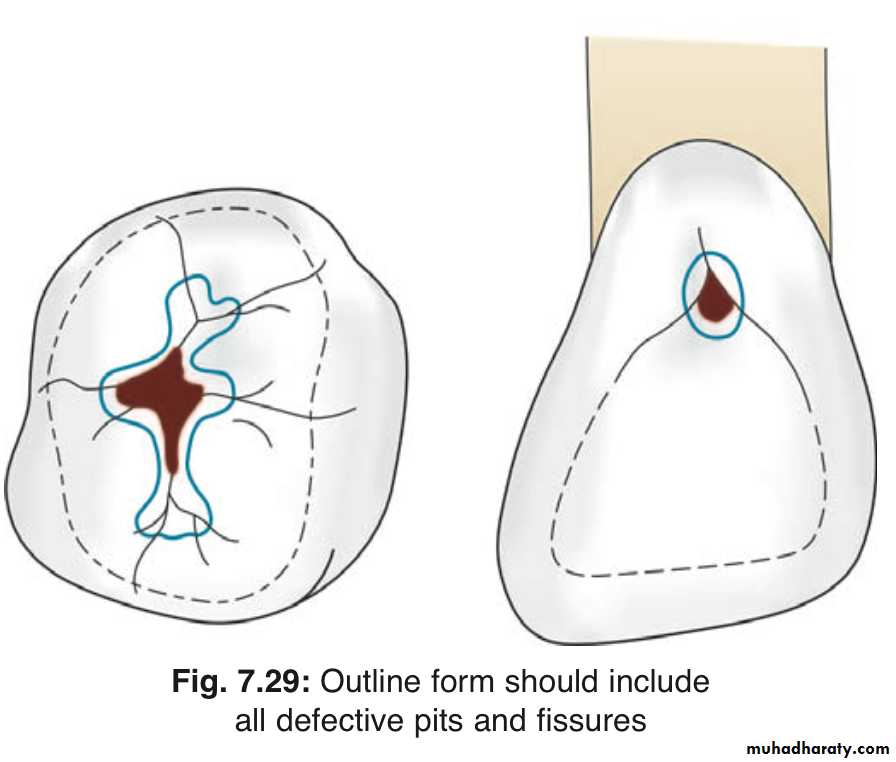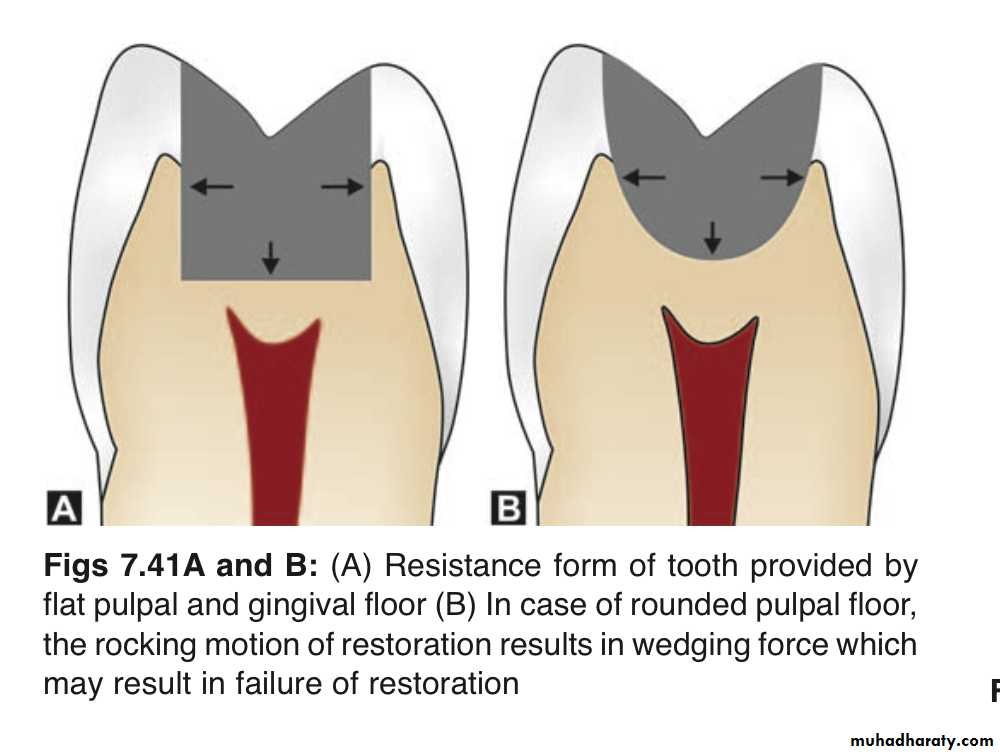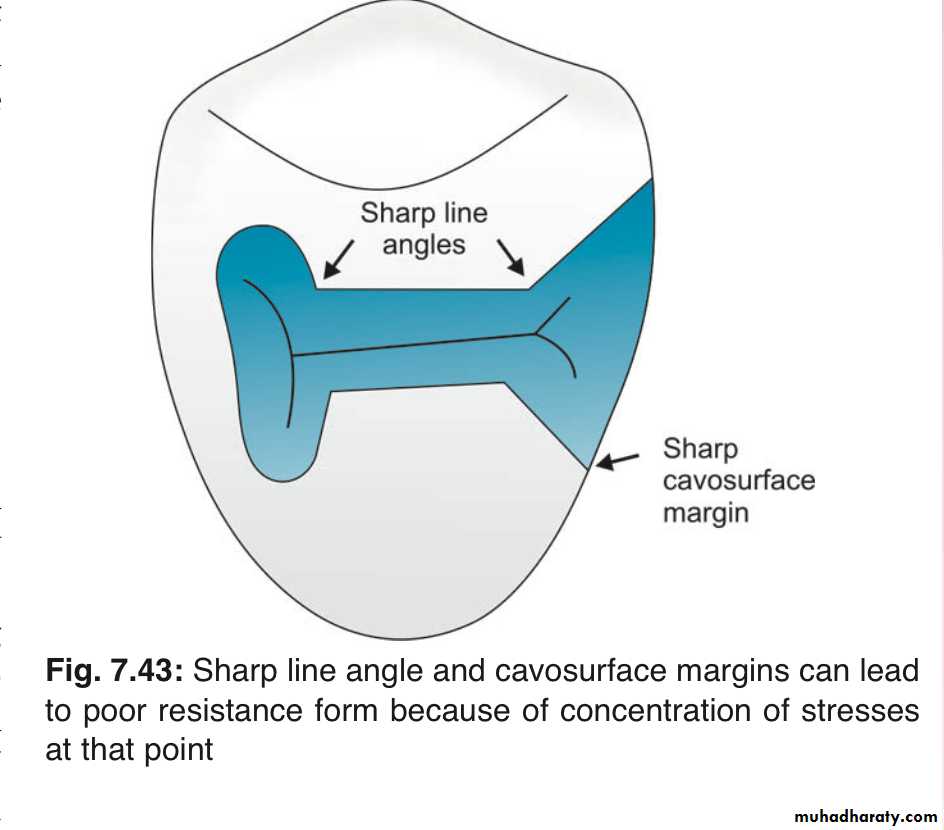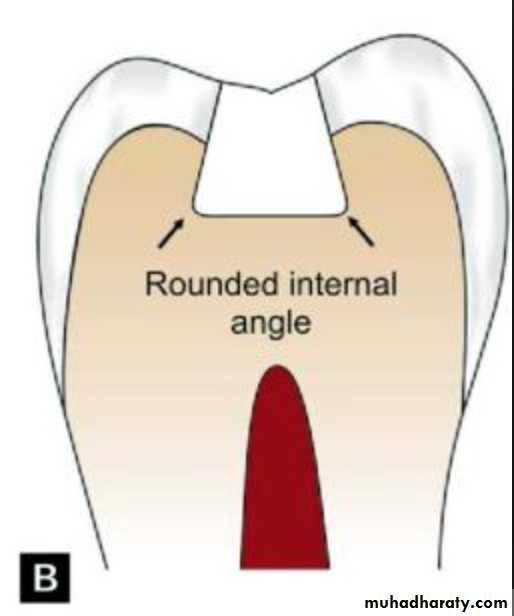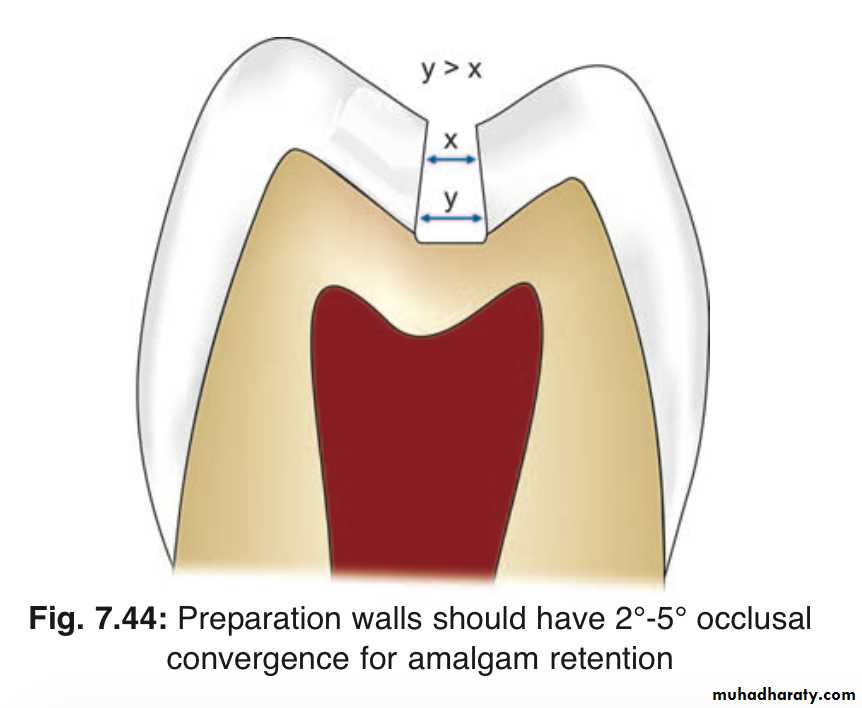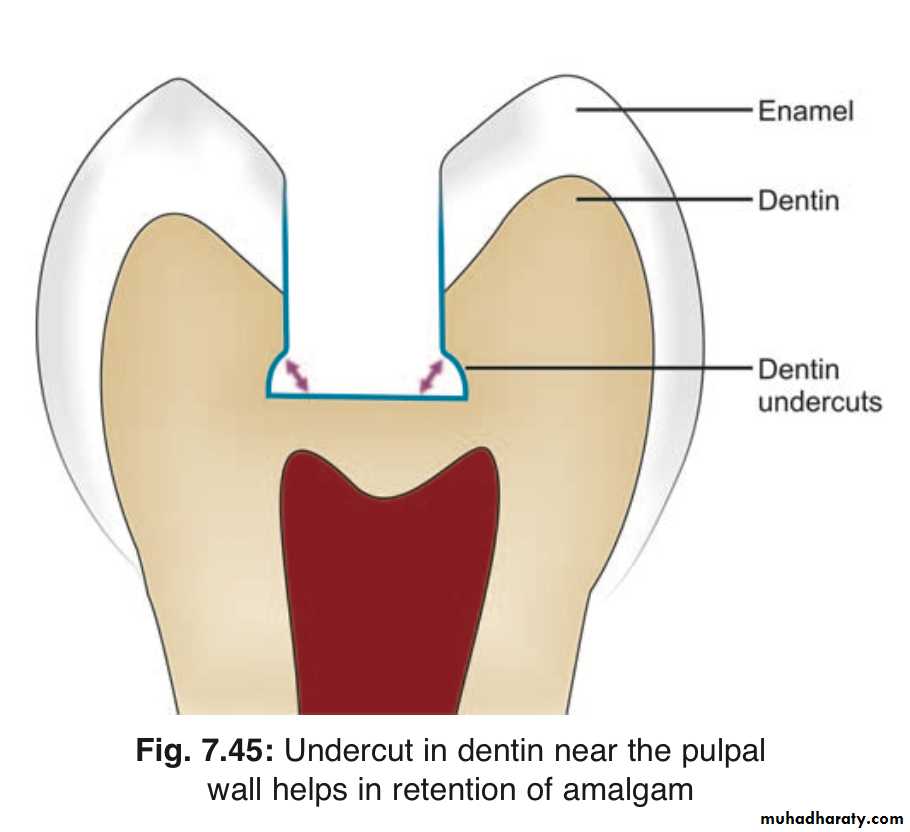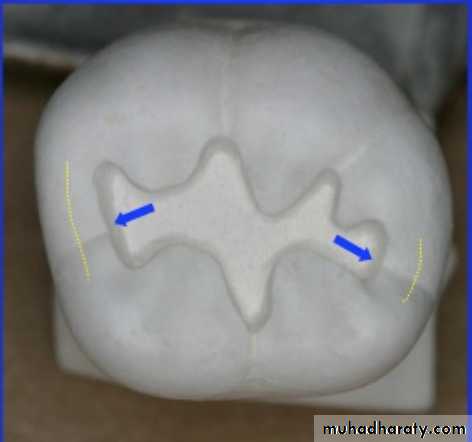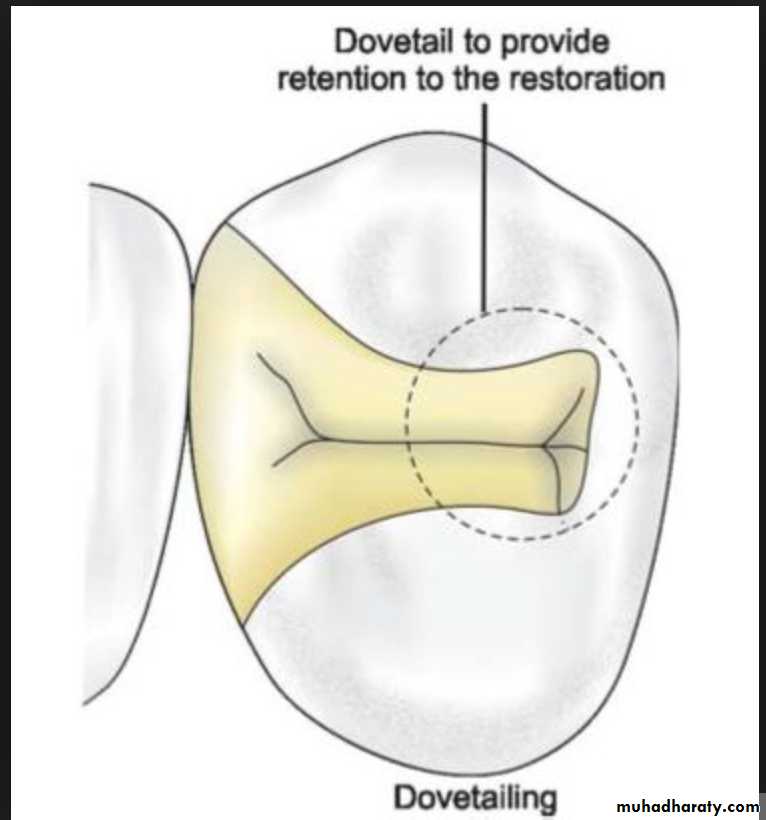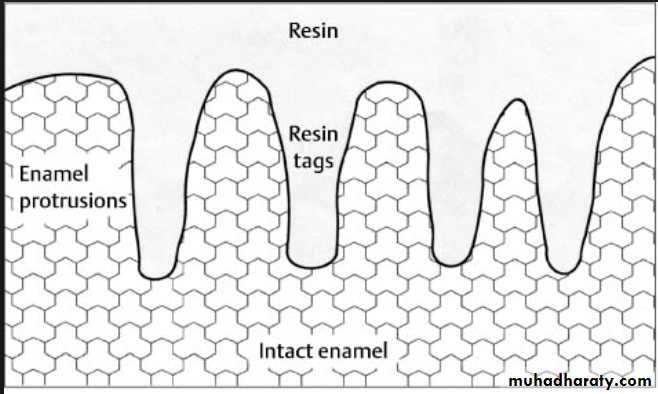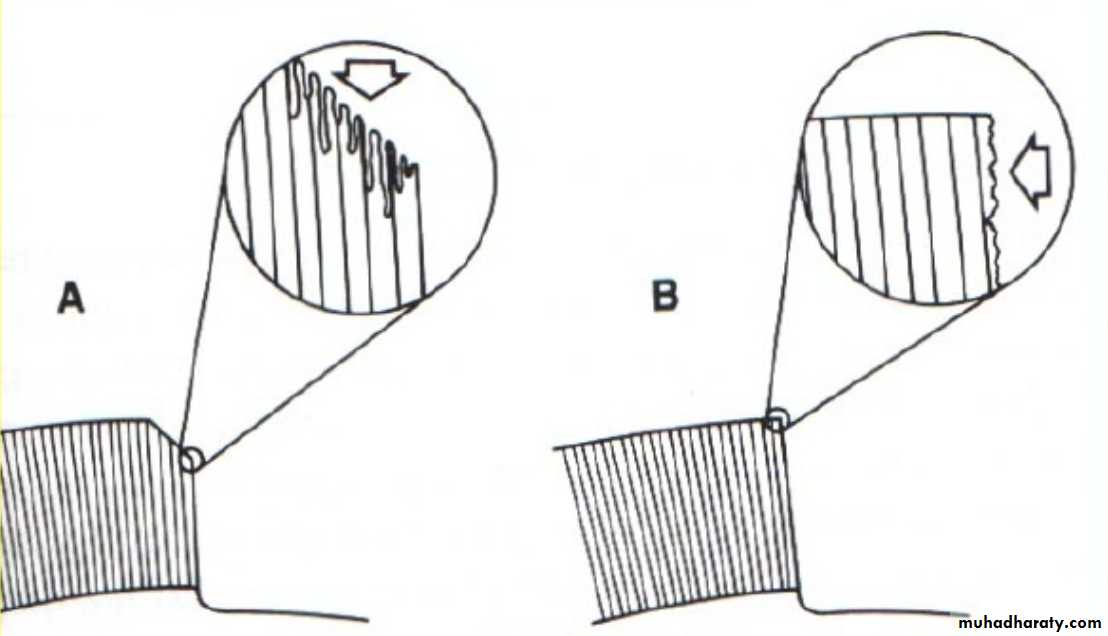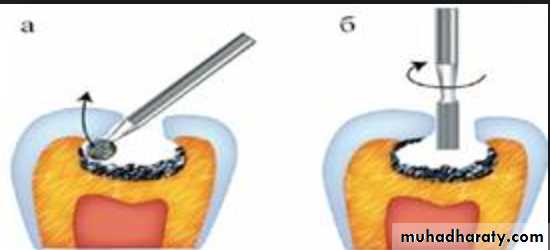Principles of Tooth Preparation
Dr. Huda YaserPURPOSE OF TOOTH PREPARATION
Preventing and Treating CariesReplacing Restorations
Treatment of Malformed, Fractured and Traumatized Teeth
Aesthetic Improvement
For Restoration of Loss of Tooth Material
TERMINOLOGY OF TOOTH PREPARATION
DefinitionTooth preparation is the mechanical alteration of a defective, injured, or diseased tooth to receive a restorative material that reestablishes a healthy state for the tooth, including esthetic corrections where indicated and normal form and function.
Simple, Compound and Complex Tooth Preparation
Simple Tooth PreparationA tooth preparation involving only one tooth surface is termed simple preparation
Compound Tooth Preparation
A tooth preparation involving two surfaces is termed compound tooth preparationComplex Tooth Preparation
• A tooth preparation involving more than two surfaces is called as complex tooth preparationTooth Preparation Walls
Internal WallExternal Wall
Pulpal Wall
Axial wall
Floor
Internal Wall
It is a wall in the preparation, which is not extended to the external tooth surface
An external wall
Is a wall in the prepared tooth surface that extends to the external tooth surface. External wall takes the name of the tooth surface towards which it is situated.eg; Buccal, lingual, mesial, distal
Pulpal Wall
A pulpal wall is an internal wall that is towards the pulp and covering the pulp. It may be both vertical and perpendicular to the long axis of tooth.Axial Wall
It is an internal wall which is parallel to the long axis of the toothFloor
Floor is a prepared wall which is usually flat and perpendicular to the occlusal forces directed occluso-gingivally, for example, pulpal and gingival wallsBuccal
DistalLingual
Cavosurface Angle Margin/Tooth Preparation Margin
Cavosurface angle is formed by the junction of a prepared tooth surface wall and external surface of the toothThe acute junction is referred to as preparation margin or cavosurface margin. The cavosurface angle may differ with the location of tooth and enamel rod direction of the prepared walls and also differ according to the type of restorative material to be used
Line Angle
It is a junction of two surfaces of different orientations along the line and its name is derived from the involved surfaces.1
2
Point Angle
It is a junction of three plane surfaces or three line angles of different orientation and its name is derived from its involved surfaces or line angles.1
2
3
Buccal
DistalLingual
TOOTH PREPARATION
Black gave following guidelines for tooth preparation:Providing definite mechanical retention in the preparation.
Extension of preparation in adjacent pits and fissures for prevention of recurrent caries.
Removal of infected and affected dentin from all surfaces.
Removal of even healthy tooth structure to gain access and good visibility
When Black gave classification, following conditions and considerations were prevalent at that time:
Poor oral hygiene habits
Poor properties of the existing restorative materials
The expected longer life of the restoration
Hard and fibrous food
More liking towards gold and silver fillings in teeth
Nowadays because of change in following conditions, design of the tooth preparation has become most conservative
Use of preventive measures like fluoridation of water supply, fluoride toothpaste, topical fluoride applications, proper brushing and flossing, etc.
Understanding of the fact that the remineralization of enamel and affected dentin can take place
Advances in tooth colored, adhesive, fluoride releasing restorative materials
Newer advancements in restorative materials.
Improvements in diagnostic aids.
Better oral hygiene maintenance.
Mechanical retention forms further improve the retention.
Classification of Tooth Preparations
Class I–Pit and fissure preparationsoccur on the occlusal surfaces of premolars and molars, the occlusal two-third of buccal and lingual surface of molars, lingual surface of incisors and any other abnormal position
Class II
Preparations on the proximal surface of premolars and molars are class IIModification of Black’s classification was made to provide more specific localization of preparations.
MOD
Class II–Preparations on the single or both proximal surface of premolar and molar teeth. When there is involvement of both proximal surfaces, it is called mesio- occluso-distal (MOD) preparation
Class III
Preparations on the proximal surface of anterior teeth and not involving the incisal angles are class IIIClass IV
Preparations on the proximal surface of anterior teeth also involving the incisal angle come under class IVClass V
Preparations on gingival third of facial and lingual or palatal surfaces of all teeth came under Class VClass VI
Preparations on incisal edges of anterior and cusp tips of posterior teeth without involving any other surfaceSTEPS IN TOOTH PREPARATION
Tooth preparation is divided into two stages, each consisting of many steps. Though each step should be done to perfection, but sometimes modifications can be made in steps.
• Stage I
Initial tooth preparation steps• Outline form and initial depth.
• Primary resistance form.
• Primary retention form.
• Convenience form.
B. Stage IIFinal tooth preparation steps
Removal of any remaining enamel pit or fissure, infected dentin and/or old restorative material, if indicated.Pulp protection, if indicated.
Secondary resistance and retention form.
Procedures for finishing the external walls of the tooth preparation.
Final procedures: cleaning, inspecting and sealing.
Under special conditions these sequences are changed.
Initial Tooth Preparation
Outline Form and Initial DepthOutline form defines the external boundaries of the preparations.
Maintaining the initial depth of 0.2 to 0.8mm in to the dentin.
Black’s Extension For Prevention Principles
Extension for prevention means the placing the margins of preparations at areas that would be cleaned by the excursions of food during chewing.It is done with the objective of preventing the recurrence of caries at the margins of fillings where the recurrence of decay is most commonly seen.
His concept also included extending preparations through enamel fissures to allow cavosurface margins to be placed on nonfissured enamel.
2.Primary Resistance Form
Is that shape and placement of preparation walls to best enables both the tooth and restoration to withstand, without fracture the stresses of masticatory forces delivered principally along long axis of the tooth• Rounding of internal line angle to reduce the stress concentration points in tooth preparation
3.Primary retention form.
is that form, shape and configuration of the tooth preparation that resists the displacement or removal of restoration from the preparation under lifting and tipping masticatory forces.The retention form is affected by the type of the restorative material used.
Amalgam:Retention is increased by the following:
• Providing occlusal convergence (about 2 to 5%)the dentinal walls towards the tooth surface .
• Giving slight undercut in dentin near the pulpal wall
• Conserving the marginal ridges.
• Providing occlusal dovetailComposites:
Retention is increased by:• Micromechanical bonding between the etched and primed prepared tooth structure and the composite resin.
• Providing enamel bevels
•
4.Convenience form.
The convenience form is that form which facilitates and provides adequate visibility, accessibility and ease of operation during preparation and restoration of the tooth.B. Stage IIFinal tooth preparation steps
Removal of any remaining enamel pit or fissure, infected dentin and/or old restorative material, if indicated.Pulp protection, if indicated.
Secondary resistance and retention form.
Procedures for finishing the external walls of the tooth preparation.
Final procedures: cleaning, inspecting and sealing.
Under special conditions these sequences are changed.




























